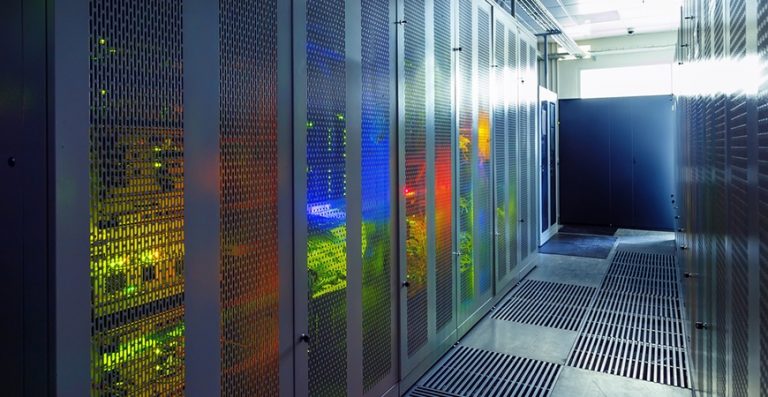Identifying Hotspots and Coldspots Through Temperature Monitoring

In the rapidly evolving world of data centers, temperature monitoring remains a cornerstone of efficient operations. As of 2025, global data centers are projected to consume approximately 536 terawatt-hours (TWh) of electricity, accounting for about 2% of worldwide energy use. Artificial intelligence (AI) and hyperscale computing are driving much of this surge. Cooling systems alone can devour up to 40% of a data center’s total energy consumption, making it imperative to identify and address thermal imbalances like hotspots and cold spots. These anomalies not only threaten equipment reliability but also contribute to significant energy waste, potentially leading to outages, reduced performance, and escalated operational costs. This article explores how advanced temperature monitoring can detect hotspots and cold spots, their causes, impacts, and strategies for mitigation and prevention.
Why Is It Essential to Detect Hotspots and Coldspots?
Detecting thermal irregularities is crucial for maintaining data center health. Hotspots—localized areas of excessive heat—can cause equipment to overheat, leading to degraded performance, hardware failures, and even electrical outages or short circuits if left unchecked. In 2024, U.S. data centers alone consumed 176 TWh, or 4.4% of the nation’s electricity, with hotspots exacerbating inefficiencies in high-density environments.
Cold spots, on the other hand, represent areas that are cooler than necessary, often resulting from overcooling. While they may seem benign, cold spots waste energy by forcing cooling systems to operate beyond what’s required, increasing overall power usage without providing additional benefits. This inefficiency can inflate energy bills and contribute to environmental strain, as data centers already account for substantial carbon emissions—56% of their electricity came from fossil fuels between September 2023 and August 2024. By 2030, data center electricity demand is expected to grow by 15% annually, underscoring the need for precise monitoring to curb waste.
What Causes Hotspots and Coldspots?
Hotspots typically arise in high-density IT setups where servers generate more heat than the cooling infrastructure can handle. Restricted airflow, poor cabinet arrangement, or inadequate ventilation exacerbates this, trapping hot air and raising temperatures in specific zones. Surprisingly, excessive overall cooling capacity can indirectly contribute to hotspots by creating uneven air distribution, where some areas receive too little cool air.
Cold spots stem from similar airflow issues but in reverse: bypass air (cool air that skips equipment and recirculates unused), overprovisioned cooling units, or leaks in raised floors and walls. These lead to zones being overcooled, wasting energy as chillers and fans run unnecessarily. Inefficient designs can result in up to 30% of cooling energy being squandered on cold spots, driving up power usage without improving performance.
Temperature Monitoring as Essential Detection for Hotspots and Coldspots
Hotspots and cold spots aren’t always visible during routine inspections; they often lurk in cabinet interiors or under floors. Temperature monitoring tools, such as infrared cameras or sensors, measure air intake and exhaust points to pinpoint anomalies. Manual methods like handheld thermometers are labor-intensive and prone to error, especially amid fluctuating loads.
Automated systems shine here, offering real-time data, trend analysis, and alerts via SMS or email. They provide granular insights into temperature variations, helping operators distinguish hotspots (e.g., above 27°C/80°F at server inlets) from cold spots (below optimal ranges like 18-22°C/64-72°F). Historical data enables predictive maintenance, reducing downtime and energy waste by up to 20% through optimized cooling.
Hotspot and Coldspot Mitigation and Management
Once detected, swift action is key. For hotspots:
- Lower cooling set points temporarily to dissipate heat.
- Add supplemental cooling units or reposition fans toward affected racks.
- Install perforated floor tiles (22-66% open area) for better air distribution.
For cold spots, which waste energy by overcooling:
- Adjust cooling outputs in overcooled zones using variable-speed fans or zoning controls.
- Seal air leaks to prevent bypass, ensuring cool air reaches equipment efficiently.
- Implement containment systems to isolate cold air, reducing the need for excessive chilling and cutting energy use by 10-15%.
Regular monitoring post-mitigation prevents recurrence, with AI-driven tools now optimizing adjustments in real-time.
Preventing Hotspots and Coldspots Through Improved Airflow
Proactive airflow management is vital for thermal balance. Key strategies include:
- Hot and Cold Aisle Containment: Arrange cabinets in alternating rows to separate hot exhaust from cold intake air, minimizing mixing and reducing energy waste from recirculation.
- Blanking Panels: Fill unused rack spaces to block hot air bypass, preventing both hotspots and cold spots by directing airflow precisely.
- Air Restrictors and Sealing: Cover cable cutouts and seal floor/wall gaps to eliminate leaks, boosting cooling efficiency and curbing overcooling energy loss.
- Advanced Cooling Tech: Adopt free cooling in cold climates or immersion cooling to slash water and energy use, addressing cold spots by matching cooling to demand.
These measures can improve Power Usage Effectiveness (PUE) from averages of 1.5-2.0 to under 1.3, saving millions in energy costs annually.
Temperature Sensors as the Key to Comprehensive Monitoring
Investing in robust temperature sensors is a cost-effective first step. Modern sensors, like those from AKCP, offer accurate readings, fluctuation alerts, and integration with platforms for holistic environmental control. When paired with software like AKCPro Server, they provide detailed visualizations, helping spot both hot and cold anomalies early.
Choosing the Right Temperature Monitoring System
With data centers facing diverse conditions, select systems with:
- Water and Humidity Resistance: To ensure durability and accurate data amid moisture risks.
- Alarm Integration: For instant notifications on thermal deviations.
- Data Analytics Platform: Enabling cross-device access and AI-powered insights for energy optimization.
- Scalability: To handle growing AI-driven loads, projected to double global data center energy demand by 2028.
Hotspots and cold spots remain common pitfalls, but with advanced monitoring, data centers can enhance reliability, cut energy waste, and support sustainable growth in an era of escalating demands.
